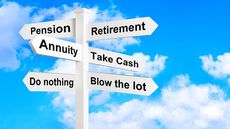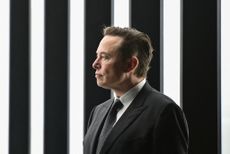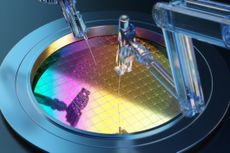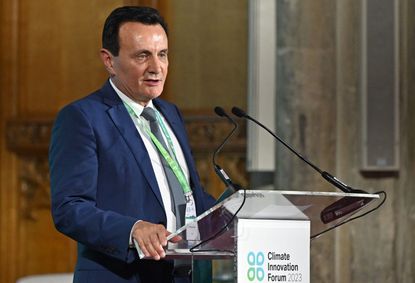-

Revealed: Best buy-to-let property hotspots in the UK
-

Annuity rates rise 6.5% over past year - is now a good time to buy one?
Advice -

Should you invest in Tesla?
-

Adidas, Nike or Jordans - could collectable trainers make you rich?
-

The MoneyWeek Readers' Choice Awards 2024
MoneyWeek Awards -

How to get the right travel insurance
Features
Sign up to Money Morning
Don't miss the latest investment and personal finances news, market analysis, plus money-saving tips with our free twice-daily newsletter
Most Popular
-
Premium Bonds alternatives that turn savings into winnings
Still waiting on Agent Million to knock on your door? Consider these Premium Bonds alternatives for your portfolio.
-
Revealed: Best buy-to-let property hotspots in the UK
Looking for the best buy-to-let property locations in the UK? We reveal the top 10 postcodes with the strongest rental returns
-
The best one-year fixed savings accounts – April 2024
Savings Earn nearly 6% on one-year fixed savings accounts – the best rate seen in 14 years. We have all the best deals available now
-
Share tips of the week
Tips MoneyWeek’s comprehensive guide to the best of this week’s share tips from the rest of the UK's financial pages.
-
When will interest rates fall? Latest Bank of England predictions
Briefings The Bank of England has kept interest rates at 5.25% for eight months. But when could the base rate go down?
-
The MoneyWeek Readers' Choice Awards 2024
MoneyWeek Awards The MoneyWeek Readers' Choice Awards celebrate the products and services that help you make, keep and spend your money. Vote now in the 2024 awards.
Investing
-

Investors are snapping up gilts thanks to tax incentives – but is your money better off elsewhere?
UK government bonds, also known as gilts, are proving popular with investors so far this year, thanks to higher interest rates and the attractive tax incentives they offer. Should you invest in them?
By Katie Williams Published
-

What is bitcoin halving and what does it mean for crypto investors?
The latest bitcoin halving event took place in the early hours of Saturday morning. Historically, this practice has caused the cryptocurrency to soar in value. What’s happening with the bitcoin price this time?
By Katie Williams Last updated
-

The industry at the heart of global technology
The semiconductor industry powers key trends such as artificial intelligence, says Rupert Hargreaves
By Rupert Hargreaves Published
Personal Finance
-

Coventry Building Society bids £780m for Co-operative Bank - what could it mean for customers?
Coventry Building Society has put in an offer of £780 million to buy Co-operative Bank. When will the potential deal happen and what could it mean for customers?
By Vaishali Varu Published
-

RBS to close a fifth of branches
Royal Bank of Scotland plans to shut 18 branches across Scotland, resulting in the loss of 105 jobs. We have the full list of closures.
By Ruth Emery Published
-

State pension warning as families opting out of child benefit hits record high
Up to one million parents could be losing out on £6,500 in retirement because they have opted out of receiving child benefit.
By Ruth Emery Published
Economy
-

ONS wage growth data puts Bank of England UK interest rate cuts into doubt, analysts warn
News ONS wage growth data has shown earnings are continuing to rise at an inflation-busting rate. It means cuts to the base rate may come later in the summer
By Henry Sandercock Published
-

What does conflict in the Middle East mean for oil prices and the economy?
Israel launched a retaliatory strike on Iran in the early hours of Friday morning. Oil prices spiked in response, before falling back again. As tensions escalate, what’s next for inflation and the economy?
By Katie Williams Last updated
Property
-

Pension vs property: which option provides the best income for your retirement?
News With the cost of a comfortable retirement on the rise, future retirees need to weigh up which strategy offers the best returns. But is a pension a better bet than property?
By Henry Sandercock Published
-

Most expensive street in Britain to buy on has houses with '£10m average asking price', Rightmove finds
News Rightmove found Buckingham Gate, close to Buckingham Palace, was the most expensive street in the country. Do you live near one that's been included on the list?
By Henry Sandercock Published
Money Masterclass
-

Best and worst UK banks for online banking revealed
When it comes to keeping your money safe, not all banks are equal. We reveal the best and worst banks for online banking when it comes to protecting your money from scams
By Oojal Dhanjal Published
-

AstraZeneca CEO’s £1.8mn pay rise approved despite shareholder opposition
AstraZeneca hiked its dividend to persuade shareholders to accept CEO Pascal Soriot’s pay rise. Is he worth his salary?
By Dr Matthew Partridge Published
-

IHT receipts hit record high – is it set to rise further?
HMRC is set to collect a historic number of IHT receipts between April 2023 and March 2024. We look at how you can stop the taxman eating into your inheritance.
By Vaishali Varu Published









